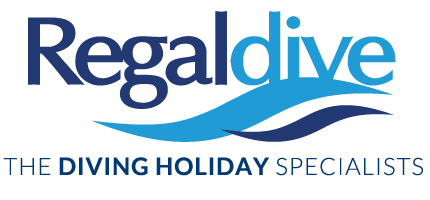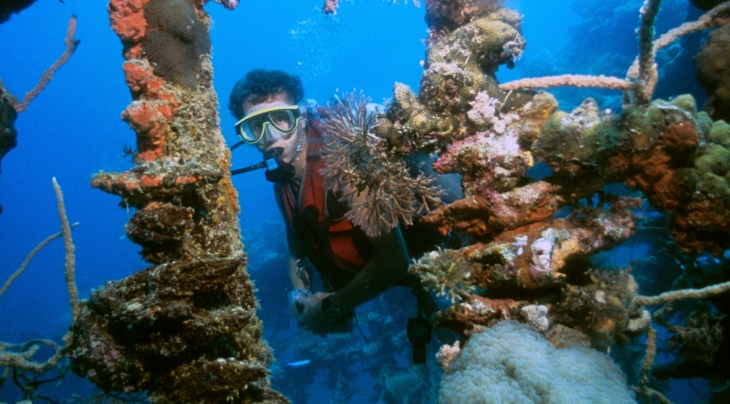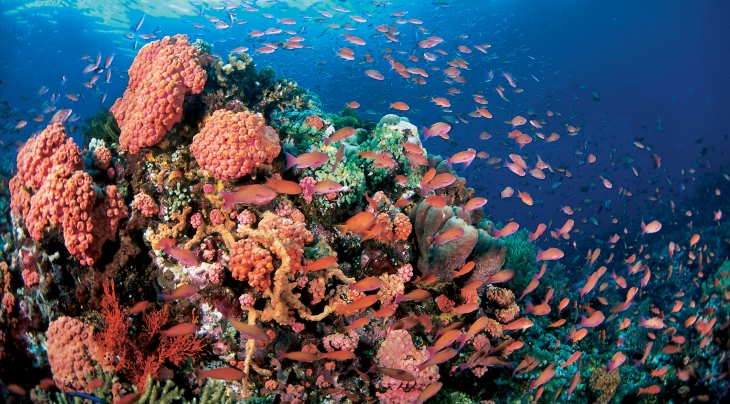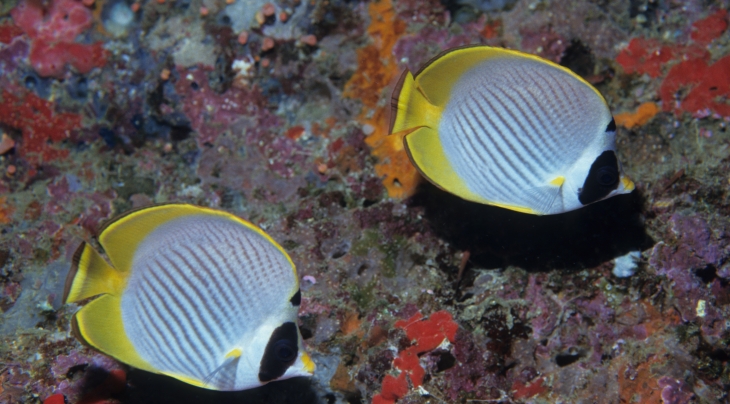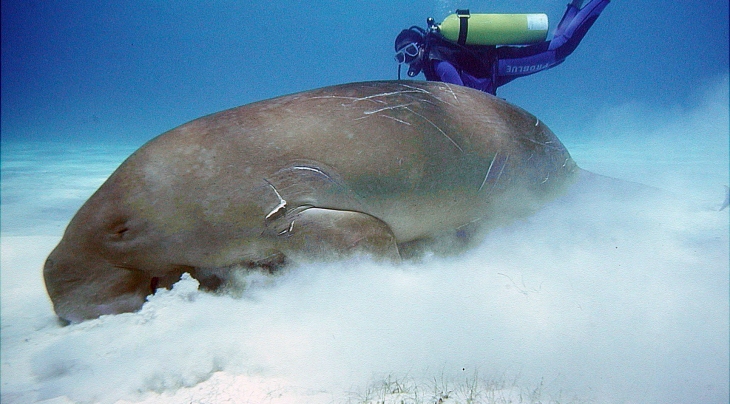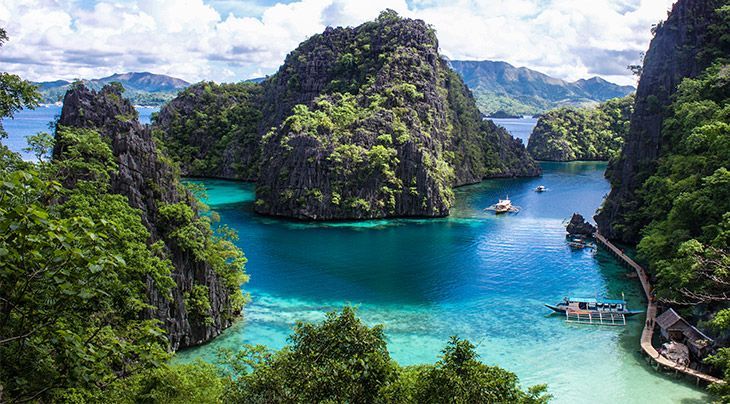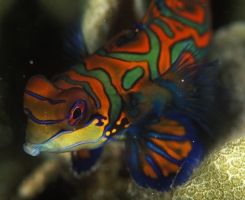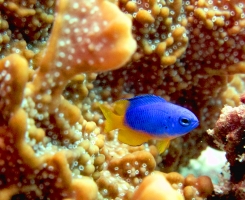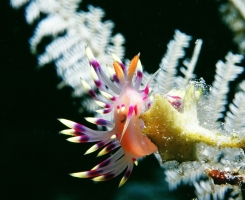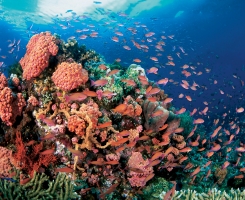- More More
- Blog
- Inspire me
- Groups
- Offers More
- Dive Courses More
- Liveaboards
More

Liveaboard Trips
On-board accommodation offering the opportunity to live right over the dive sites and to experience secluded dives...
Diving regions...
- LATEST AVAILABILITY BY REGION
- Red Sea availability
- Maldives availability
- Indonesian availability
- Socorro Mexico availability
- Galapagos availability
- ALL LIVEABOARD DIVING REGIONS
- Bahamas
- Bikini Atoll
- Caribbean
- Cocos Island
- Destinations
MoreDIVING REGIONS...
Our Top destinations....Why not try....
Find a trip
- Resort
- Liveaboard
Coron (Palawan)
Philippines Facts
Area: 5,620 sq. km
Population: 77 million
Language: Filipino, English widely spoken
Time: GMT + 8 hours
Electricity: 220v; 110v also widely used
Diving in CORON
Coron is located in the South East corner of Busuanga Island, in the province of Palawan. This diverse region is known as the last frontier of the Philippines and is home to some spectacular scenery, ranging from limestone cliffs, thermal lakes and underwater caves. Jacques Cousteau described this area of the archipelago as “the most beautiful place I ever explored". With over 1,800 islands, pristine beaches, world-class diving and a diverse wildlife you will understand why.
Coron Bay is synonymous with divers worldwide as the wreck diving mecca of the Philippines, with relatively easy access to eleven WW2 wrecks at varying depths, including Akitsushima, Okikawa Maru and Olympia Maru. Intermingled with picturesque reefs that are teeming with aquatic life and rarely any challenging currents, this makes Coron a suitable dive destination for all levels of dive qualification.
WRECK DIVE: IRAKO maru
A large Japanese refrigeration ship (9723 tons), located at the mouth of Coron Bay and probably the best wreck dive in the Philippines. At just over 146m long and 19m wide, The Irako is reasonably intact and because of the normally good visibility, you know you are diving on a big shipwreck! Big groupers, schools of tuna and yellow fin, lion fish, scorpion fish, sea turtles and huge schools of Jacks live around the wreck. There is a beautiful deep penetration through the engine room for trained, experienced and properly equipped divers.
WRECK DIVE: OKIKAWa MARU (formerly known as TAiEI MARU)
A Japanese tanker, approximately 168m long. This wreck is totally covered with beautiful corals and offers a large variety of marine-life. The deck is between 10m and 16m and is good for wreck dive beginners. There are many penetration possibilities for advanced wreck divers including penetrating up the propeller shaft from the outside of the ship all the way into the engine room. Strong tidal currents often do affect this wreck. Diving in strong currents lets you see the most fish as it creates an exhilarating habitat for a significant and diverse quantity of marine species. At the bow you can see a school of snappers and huge bat fish holding position into a slight current. Large fish shelter out of the current behind crumpled metal and inside of the deckhouses .There is also a large resident grouper near the bottom.
WRECK DIVE: KYOKUZAN MARU
Unlike most of the other wrecks you may wish to dive on a trip to Coron, Kyokuzan Maru is not in Coron Bay but is found in a small bay to the north of Busuanga island, practically on the flight path of Francesco Reyes airport. This Japanese freighter measures about 152 m long and lies almost upright at an average 30m depth; she provides a beautiful wreck dive experience. In excellent condition, this huge sunken ship usually has about 20 metres visibility and ideal diving conditions. In the cargo rooms hold Japanese cars and trucks can be found and provides shelter to batfishes, fusiliers and trevallies. Barracudas and rays are frequently sighted. Day trips to this site can be arranged. Please note there is a 1-hour land transfer to meet a local OWSI instructor who will transfer you there by bangka boat and guide. Ask for details.
BARRACUDA LAKE
A very unusual and unique dive site, located North West of Coron Island, famous for its varying thermoclines. Barracuda Lake is a freshwater lake sitting in an extinct volcano crater. It is about 40m deep and surrounded by sharp limestone cliffs and a truly beautiful place. After a boat ride from Coron Island, it's a 10 minute walk to the site (dive gear is taken care of). Intriguing underwater rock formations, not much fauna but you can still spot Gobies, Shrimps, Groupers and sometimes even Barracuda! You can dive Barracuda Lake all year long, and it is also a popular snorkelling spot.
This lake is surrounded by limestone cliffs and served by a hot spring. Water temperature varies from 27- 40°C and the transition between cold freshwater to the warmer saltwater can provide a shock, although you can see the change approaching where the water temperatures merge in the thermocline. There are numerous shells on the bottom, shrimps on the walls and a few rabbit fish in the shallows and is an in-water experience that can be appreciated by divers and snorkellers alike.
APO REEF
Famous for its dramatic drop-offs down to 400 metres, the steep walls of Apo reef (not to be confused with Apo Island, Dumaguete) are covered with corals, sponges, tunicates, nudibranchs and slugs. Green and hawksbill turtles and a multitude of fish including damselfish, butterfly fish, batfish, surgeonfish, snappers, fusiliers and trevallies can be expected. Where strong currents are present, there is the increased chance of sighting mantas, barracudas and sharks. NB: This is a 3-night/4-day safari departing from Coron Town and can only be organised by request, subject to availability.
Getting to Coron
Coron is reached via an internal flight from Manila (approx. 45 minutes) or Cebu (approx. 90 minutes) to Busuanga Island. Emirates, via Dubai, Singapore Airlines, via Singapore, Etihad, via Abu Dhabi, Qatar Airways, via Doha, Cathay Pacific, via Hong Kong and Malaysia Airlines, via Kuala Lumpur offer regular schedules to Manila. Philippine Airlines also fly directly from London to Manila. It is also possible to transfer via ferry to/from El Nido. In Busuanga, you will be met and transferred overland to Coron.
Overnights in Manila
These can be arranged as part of your package with transfers, typically either near the airport or in the bustling district of Makati with good shopping and local eating choices, depending on your requirements and/or time in destination.
CORON Easy diving
Coron Easy Diving is situated in Coron Bay and offers daily boat dives as well as PADI courses. Night dives are available on request. These are usually included at the end of a day trip or combined with a trip to Barracuda Lake.
The Wrecks of Coron are recognised as one of the best wreck diving destinations in the world. There are 11 recognised WWII wreck dive sites within a short boat ride of Coron, many of them only an hour from the dive base. The Wrecks of Coron comprise eight major wrecks and three minor wrecks. Most are about 14 nautical miles from Coron Town.
Divers can enjoy wreck diving, coral gardens, wall diving, night diving, cavern, and cave diving, all accessible from the Coron Easy Diving Coron base.
Packages of 2-3 tank dives are normally offered every day on speedboats taking 6-8 divers. The boats are covered, and entry is a back roll, with ladders to exit the water. Transfers to the Dive Centre are included. Snacks are provided as is lunch on longer day trips. All boats are equipped with a marine radio and mobile phone, plus medical oxygen and first aid kits. Drop tanks at five metres are used on wreck dives below 20 metres.
Facilities at the dive centre include a large storage room and drying area, an outdoor shower and a toilet. Relax in the lounge area overlooking Coron Bay with your cool drink each day on return from diving. They are the only dive shop in the area with their own pier and speedboats. In addition, the Dive Centre offers Stand Up Paddle Boarding (SUP) and kayak rental, plus guided tours through the mangroves.
DIVE PACKS
We recommend that you book your dive packs with Regaldive prior to departure, to secure your diving or course and so that the dive centre is expecting you. Options available include four and six days diving packages (with two or three dives per day). Coron Wrecks Sanctuary Fees are included. All other entry fees are charged locally (see Extras In Resort for further information). Please discuss your requirements with the Regaldive team, who will prepare a quotation suited to your needs.
Note: All divers must dive with a computer.
DIVE COURSES
A range of diving courses are available for those looking to learn to dive or further their education. Please enquire for details.
EXTRAS IN RESORT
Prices listed below are an indication only and are subject to change.
- Nitrox (recommended for some sites): PHP 300 per tank.
- Lunch: Included on 3-tank full day trips only. Other days at own expense.
- Marine Park and Sanctuary Fees (excl. Coron Wrecks): Range from PHP 100 to PHP 250 (paid locally and subject to change) (e.g. Barracuda Lake, Siete Pecados, Skeleton Lake, Twin Peaks).
- Fuel surcharges to Sangat Island wrecks (PHP 500 per person, per day), to Akitsushima and Okikawa wrecks (PHP 750 per person, per day)/
- Apo Reef: This is not normally part of the package. Special trips can be organised on a request basis, but are not guaranteed
Equipment Rental per day - Payable locally:
- Full equipment (Scubapro) (excludes computer): PHP 750
- Dive computer (Suunto): PHP 500
- Wetsuit: PHP 250
- Torch: PHP 300
- Regulator: PHP 250
NB. Coron Wrecks Sanctuary Fees are included in your dive pack.
The Philippines is an island nation located in South East Asia with Manila as its capital city. The Philippine archipelago comprises 7,107 islands in the western Pacific Ocean. These islands are home to spectacular scenery, pristine beaches, incredible sights and lively cities. Dramatic drop offs, wrecks, caves and a richly varied marine life also guarantee fabulous diving. Combined with the renowned Philippine hospitality and warmth, an unforgettable dive holiday awaits.
You will find a true blend of cultures; the people are generally of Malay descent, but Philippine history has introduced Chinese, Spanish and American elements as well. The Philippines is a predominantly Christian country where eight out of ten Filipinos are practising Catholics. Filipino hospitality is legendary and the Philippines is the fiesta nation of Asia. Fiestas celebrate harvests, births and victories, as well as religious events. The Filipinos like to party and celebrations are found in every ethnic group and may be large regional events or small local happenings.
Resorts have been hand picked, not only for their comfort and surrounding scenery but most importantly, for their proximity to incredible dives sites. Whilst out of the water guests can relax on some of the best beaches in the world, enjoy the local markets, festivals and sights or even spend a night in the exciting and bustling Manila or more laid back Cebu.
As the Philippines is a strong Catholic nation, festive holidays such as Easter are very busy. Either book well in advance, or avoid the main religious holiday periods where possible.
Climate
The climate of The Philippines can broadly be described as hot and tropical. Most people visit The Philippines during the dry season. However, many regular visitors attest that the best time to visit is during the wet season and that the proliferation and variety of marine life is best June, July and August.
Dry season: December to May
Wet season: June to November
During the dry season, easterly winds prevail and air temperature is in high 20's to mid-30's°C. February to May are generally the hottest. Wet season winds are from the west, with air temperature in mid to high 20's°C. You can often strike lucky and have weeks of brilliant blue skies and unlimited sunshine. On the other hand, the rains, when they come, are impressive and prolonged. There are few rivers, so run off and its effect on water visibility is not generally a problem.
Please note that the Philippines is a large country and has many climatic variations from east to west and south to north.
Best underwater visibility: April to July
Water temperature average: 24-30°C
Time
8 hours ahead of GMT.
Language
Filipino is officially the national language of The Philippines. This language is based on Tagalog which is the most widely used of the 70 plus dialects used within the country. English is also prevalent throughout the country, especially in tourist destinations. English is also widely used as the medium for education, communication and business. Eight major dialects spoken by majority of the Filipinos: Tagalog, Cebuano, Ilocano, Hiligaynon or Ilonggo, Bicol, Waray, Pampango, and Pangasinense.
Currency
The unit of currency is the Philippine Peso (PHP). 1 Peso = 100 Centavos. The US dollar is the most widely recognised foreign currency. Euros & GBP are also readily exchanged.
The majority of larger towns have ATMs, however, facilities for money withdrawal or changing are far less widespread away from the main centres of population. There are bank machines at the airport. Visa, MasterCard and American Express are accepted in most towns, but you may be required to pay an extra 10-15% surcharge for their use. Outside of the main towns, not all places accept credit cards. Please refer to your individual destination notes for each resort, but as a guideline, please see below:
- Malapascua: Ocean Vida accepts credit cards and has an exchange. Elsewhere credit cards cannot be accepted, please ensure you carry sufficient cash. USD and GBP are accepted.
- Dumaguete: Banks and ATMs are available in Dumaguete town. Pura Vida and Atmopshere accept credit cards.
- Palawan: Accepts credit cards
- Sipalay: Accepts credit cards
- SY Philippine Siren: GBP, Euro & USD Currency. Credit card payment only possible when docking at the following ports: Cebu, Philippines. 3% charge applies.
Tipping
Tipping is expected for many services. The standard is 10% of the total bill or optional where there is a 10% service charge.
Flight Information
Regaldive can offer packages to the Philippines on a number of different airlines.
London - Manila: Singapore Airlines, Cathay Pacific, Emirates, Etihad Airways, Qatar Airways, Malaysia Airlines and KLM all fly daily via their national hubs.
London - Cebu: Singapore Airlines, Cathay Pacific and Emirates fly regularly via their national hubs.
Carry-On Luggage Restriction:
Philippines Office for Transportation Security has issued new rules that include 'Scuba Diving Equipment' (including regulators) on the list of blunt instruments that are not to be in carry-on/cabin baggage on flights originating within the Philippines. Please ensure that all scuba equipment is secured within checked-in baggage on all domestic flights and on all departing international flights.
Internal flights:
Manila - Cebu: Multiple daily flights
Manila - Busuanga: 3-4 flights daily
Cebu - Busuanga: Multiple daily flights
Manila - Dumaguete: 3-4 flights daily
Baggage on internal flights:
The below only applies only to extra flights within the Philippines built into your itinerary, not if it is part of your international ticket.
Baggage allowance: Checked bag - 20kg / Hand baggage - 5 to 7kg. Please note that the internal flight to / from Busuanga (Palawan). This is a shorter air strip and the airline may not permit any extra weight.
Payment for extra kilos on check-in (guideline):
Cebu Pacific: Php 150 per kilo
Philippine Airlines: Php 169 per kilo
Transfers
Whichever island you are staying on, you are met at the airport/ferry port and transferred to your resort. Whether by flight, jeepney, car or bangka boat, there are fantastic sights to enjoy on your journey there and back. Although some transfer can take up to a whole day, most clients pass feedback that this was a very interesting part of their overall trip.
The below information is to give you a general idea of transfer times between regions; actual transfer times may differ slightly according to individual arrangements and ferry timetables, tides etc.:
Cebu - Dumaguete: 4 - 5 hours by vehicle, ferry and hotel shuttle
Cebu - Bohol / Panglao / Cabilao: 3 to 4 hours by vehicle, ferry, vehicle
Cebu - Malapascua: 4 – 5 hours by vehicle and outrigger
Cebu – Moalboal: 3.5 hours by vehicle
Dumaguete - Bohol / Panglao / Cabilao: 3 hours by hotel shuttle, ferry and vehicle or 3 to 4 hours by Outrigger conditions permitting
Dumaguete - Malapascua: 8 - 9 hours by vehicle, ferry, vehicle and outrigger
Panglao - Cabilao: 1.5 - 2 hour vehicle and boat
Panglao - Malapascua: 7+ hours by vehicle, ferry, vehicle and outrigger
Cabilao - Malapascua: 7+ hours by vehicle, ferry, vehicle and outrigger
Manila - Cebu: 1: 15 hour by internal flight
Manila - Coron, Palawan: 2.5 hours by internal flight and hotel shuttle
Manila - Puerta Galera: 3 hours by vehicle and boat
Manila – Anilao: 2.5 hours by vehicle
Manila – Caticlan, Boracay: 2 hours by internal flight, vehicle and boat
Passports
Please always check your own entry requirements regardless of your nationality. Your passport should always have at least 6 months validity on date of return from travel. Always check for last minute changes in entry requirements and other nationalities should check with their consular office.
Visas
British nationals can enter the Philippines without a visa for an initial period of 30 days. You can also get a tourist visa from the Philippine Embassy before you travel, which will allow an initial 59 day stay. Other nationalities should check with their own consulate.
Vaccinations
Vaccination requirements are subject to change and should be confirmed before departure. For the most up to date advice please consult your travel clinic or GP. Further information regarding vaccinations for travel to this country can be found at www.fitfortravel.nhs.uk and from your local healthcare provider. We recommend protection, as a minimum, against typhoid, tetanus, hepatitis A and polio.
Asia Grand View
We had some super days on the dive boats & on local trips
"We had a wonderful holiday & both enjoyed visiting Coron, it is a Town lived in by the local Filipinos which is not an artificial holiday venue. There are some very good restaurants to eat at in Coron.
The scenery is dramatic & we had some super days on the Dive boats & on local trips, which involved visits to near by islands, lunch on those islands & snorkeling.
The Diving is well organized by "Sea Dive" I have enjoyed the trips with them. The wreck dives were excellent, "Sea Dive" made arrangements for me to dive as many wrecks as was practical in the reduced days available to me.
"
Graham and Dawn - UK
Coron (Palawan) Accommodation
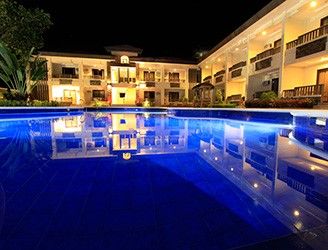
Westown Lagoon
from £1665
The Westown Lagoon hotel in Coron, the Philippines is located inside lush gardens and tranquil surroundings, offering gues...
VIEW DETAILS
Philippine Siren
from £2023
Images of Philippine Siren speak for themselves. The Philippine Siren offers the ultimate way in which to explore these ...
VIEW DETAILS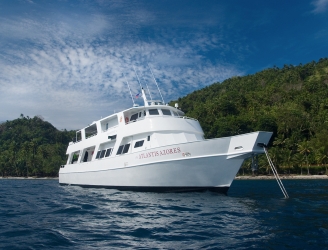
Atlantis Azores
from £2741
Atlantis Azores is a spacious 16 person liveaboard perfectly designed for the needs of divers. Atlantis Azores follows a s...
VIEW DETAILS
Philippines Aggressor I
from £2427
Explore the waters of the Philippines in classic Aggressor style with well-appointed cabins and tasty food.
VIEW DETAILS